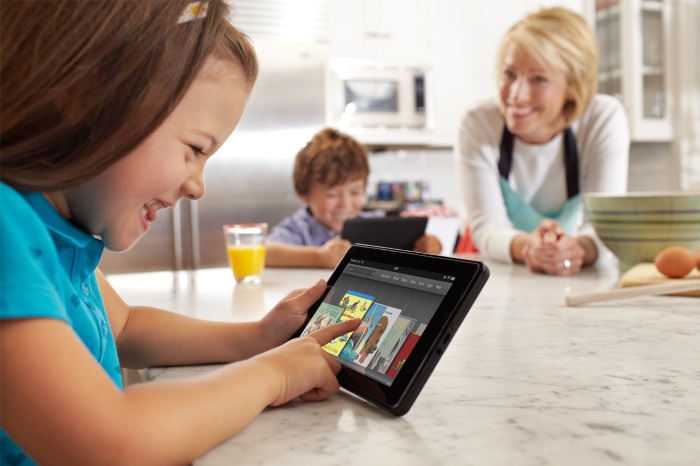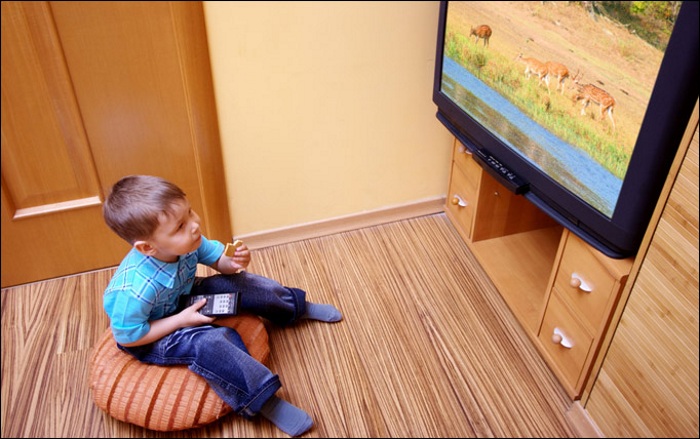Study finds children spend six hours — or more — a day on screens
Hours spent connected to devices has risen dramatically in the last two decades
A 10-year study, entitled “The Connected Kids” and put together by market researcher Childwise, has found that the amount of time children spend in front of a screen has risen dramatically over the past two decades.Today, the average child spend six hours in front of a screen, whether it’s watching TV, playing video games, using a mobile device, or sitting in front of a computer.


The report collected data from 1995 to present day to provide a comprehensive analysis of children’s media habits.
Each year, the company surveyed 2,000 children between the ages of five and 16 years old.
Among some of the study’s key discoveries:
Teenaged boys now spend the most amount of time in front of screens — about eight hours a day. Eight-year-old girls spend the least at three-and-a-half hours.
Teenaged girls spend about seven-and-a-half hour a day watching screens; in 1995, this same age bracket spent three-and-a-half hours a day watching TV.
Young children (five to 10 years old) spend four-and-a-half hours a day in front of a screen per the 2014 data; in 1995, this group averaged around two-and-a-half hours of TV.
Worth noting is that nowadays, children are multi-screening; that is, they may have a TV show on in the background, while they play on a mobile device.
"The main difference from the 1990s is that then TV and magazines were the main ways for connecting kids to the media and now they have different devices from tablets, mobiles, games consoles and they have a much higher screen time," said research executive Matthew Nevard.
In terms of program watching, a child’s viewing habit has changed dramatically too. Today’s children oft-watch television via “catch-up” services like YouTube, as opposed to the traditional TV set. To this extent, the use of paid-for-programming services like Netflix and Hulu have also become increasingly popular in recent years.
As far as programming, there’s also been a major shift in how media companies are providing shows to children nowadays. Where in the past, a few channels provided a bulk of children’s programming on weekend mornings and weekday afternoons, today, these companies have set up dedicated channels that provide content 24-hours-a-day on channels like Nickelodeon, Disney, and all of their affiliate stations (Nick Jr., Disney Jr., et al).
One of the things the researchers were particularly interested in studying is how, exactly, the internet has changed the way children engage with information.
"The internet is pivotal to their lives and they are now able to access a wealth of content," said Nevard. "They can find the content that they want."
The study points out how the internet has given children more freedom to explore their own interests, and describes connectivity as a “fundamental need for young people now.”
"Children now don't remember a time before the internet," Nevard added.
To this regard, the study charted the most popular websites for young people:
YouTube has remained in the top three since 2007.
While Facebook is among the more popular sites, it has experienced a bit of a dip in appeal in recent years; taking its place — Snapchat.
To that latter point, older children state that they like the privacy that comes with apps like Snapchat and Whatsapp. These new services have also led to a change in how children communicated.
"It reflects the image culture which has emerged, where pictures are utilized to give a better representation of current moods and or activities," the survey explains.
The only site to remain “popular” across the study’s 10 years of surveys — Google.
The last thing worth pointing out from the study is its attempt at peering into the future of technology — what these children will want and expect as adults, and what the industry should expect to provide them with. The Internet of Things, wherein a household object can communicate and share data with its owner, will be regarded as entirely normal.
"Having appliances which cannot be controlled using a smartphone or some kind of online dashboard may be seen as outdated, or at least increasingly rare," the report reads.
It also added that most children will have some form of wearable technology, whether it’s a virtual reality headset, smart glasses, or a smartwatch.
Via BBC
Learn more about Electronic Products Magazine
Copyright © by Hearst Business Communications, Inc. All Rights Reserved.
http://www.electronicproducts.com/Multimedia/Video/Study_finds_children_spend_six_hours_or_more_a_day_on_screens.aspx